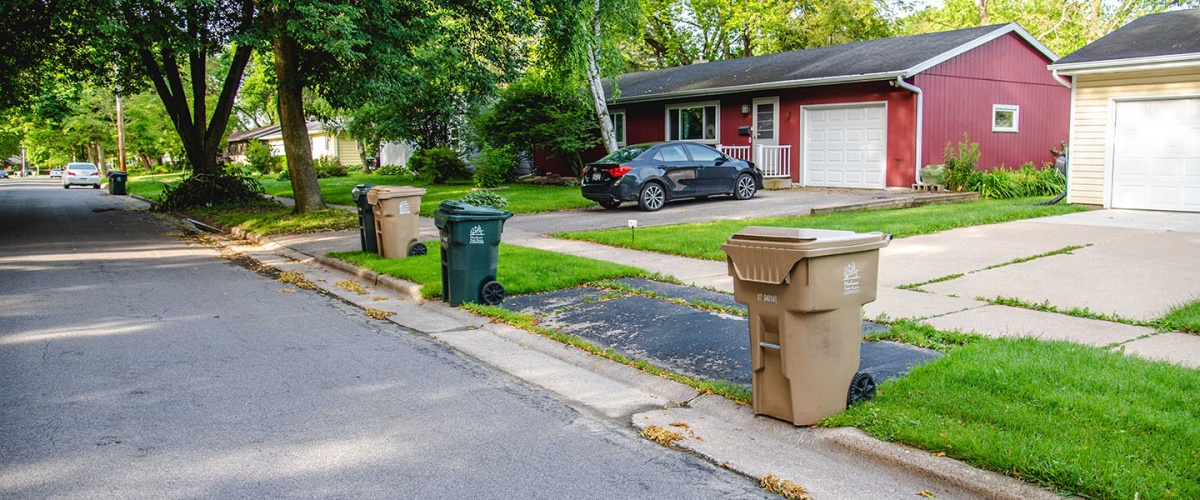Stump Removal Process
The process to remove a stump, and in most cases, replant a tree takes a long time. It can be several months in some instances.
Why?
This page tries to explain the many steps in this whole process.
If questions remain, please contact us.
-
Tree Removal
The decision to remove a tree is always thoughtfully evaluated and only done if necessary.
Some trees die or become damaged by storms. Others decline due to disease or insects and become unsafe to remain stranding. Others need to be removed in order to make way for important public infrastructure improvements.
Tree removal takes some time to do carefully. Some trees can be removed in about a half hour, while larger ones can take half a day.
-
Inspection
A forestry specialist visits the site to determine if a tree can be replanted
They evaluate the terrace width and other street features, like mail boxes, fire hydrants, street lights, and so on.
They check, the existing canopy (both private and city-owned trees), and the determine species of other trees in the area.
Weighing all those factors, they determine if another tree should be planted here.
If a tree is appropriate, they choose what species to plant for growing a sustainable and resilient urban forest.
When the new tree is planted depends on many other factors, too.
Planting occurs in the spring and the fall only. Ordering trees to plant has to occur in advance. Depending on what kind of tree a site need and what nurseries have available and when a tree is removed in the the whole ordering cycle matters.
We also juggle priorities with hundreds of planting sites around the city each planting season, too.
-
Diggers Hotline
Now, the stump.
After a tree has been removed and the area assessed, the stump location is given to Diggers Hotline so one of their representatives can mark the location of the utilities with flags.
This for safety of the public and city staff.
-
Locating Utilities
Diggers Hotline will tell you where the utility lines are, it does not tell you how deep they are underground.
Considering the next step, grubbing, digs down into the stump and roots, we need to know just how deep they are for everyone's safety.
-
Grubbing
The most common question we receive the tree removal process is when will the stump be removed.
We cannot provide a precise estimate because there are just so many steps with many priorities, work schedules, pieces of equipment, and so on.
Precisely locating the utilities underground is necessary for everyone's safety. Grubbing involves a large vertical saw that digs out stumps and roots from the ground. No one wants us to nick any important utilities, especially a gas line.
With stumps, some are priority removals because that location will receive a tree to replace one that was previously removed.
Grubbing also depends on the time of year the tree was removed.
For example, if a tree is removed in November, crews are not likely available to perform the other necessary steps to prepare a stump for removal. The same people that do stump removal are also collecting leaves in the fall and plowing snow in the winter - so there may not be staff available to do the work. So this stump will remain on a list to be removed later when it can be addressed.
The actual work to remove a stump can be quite slow as well.
Large stumps take more time. And right-of-way areas that contain obstructions like rocks or decorations make for slow work.
Weather plays a factor because poor weather can slow down the work. And extreme storms requires the workers to shift other duties.
And, of course, personnel and equipment availability play a role as well.
With many trees removed every year, and since this whole process must occur for each stump, it just winds up taking time.
-
Clean Up
After we make a mess, we clean it up.
Crews clean out the mix of wood shards, rock, and dirt to be hauled away.
The hole is then filled with clean fill material (using the dirt with wood chips would cause mushrooms as the chips decay, and you'd still need extra dirt to make up for space once occupied by the stump).
A product called hydro-seed is placed down on top of the dirt after the hold is refilled.
Make sure you are watering the grass seed after it is placed down so the grass seed takes root.
-
A New Tree
Finally, if appropriate for the site, a new tree is planted.
Trees are only planted in the spring and the fall (arborists work on other duties during the summer like treatment and storm clean up).
You can help the tree on the terrace in front of your home grow into a mature and beneficial part of our urban forest by following our new tree care tips.
Urban Forestry
- Report a tree concern
- Tree Inventory
- Pruning Work Map
- Do Not Tap Public Maple Trees
- Emerald Ash Borer
- External Urban Forestry-Related Resources
- New Tree Resources
- Permits and Applications
- Private Property Trees
- Spongy Moth
- Stump Removal Process
- Tree Protection Ordinance
- Urban Forestry Special Charge
- Urban Forestry Task Force Report
